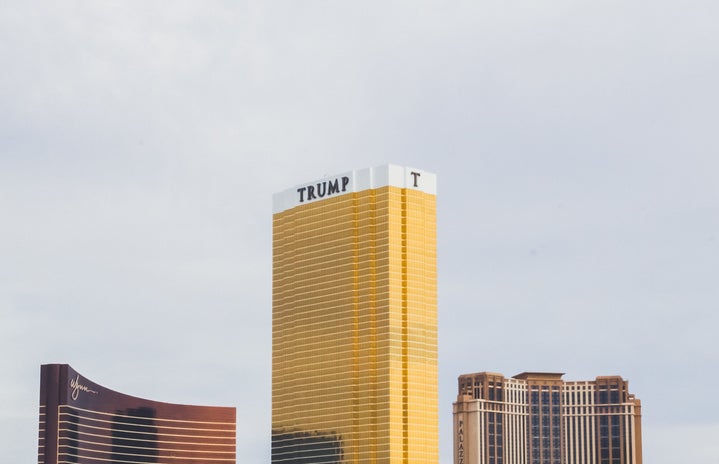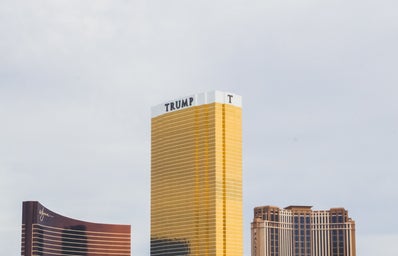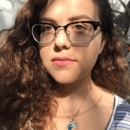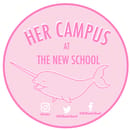I didn’t know what antisemitism was growing up. I lived in an observant Jewish household with a mother who was a rabbi and a father who had converted to Judaism. I went to Jewish camps, Jewish youth groups, Jewish community centers, and Jewish grocery stores. I attended Jewish day school from kindergarten to eighth grade as well as a Jewish high school for one year before transferring to a secular one closer to my home. I lived in a big Jewish bubble, where antisemitism was nowhere to be found.
I was 15 years old when I encountered antisemitism for the first time. It was the middle of my tenth-grade biology class. We were in the computer lab working on our final research papers and the teacher had left to use the restroom. Everyone was fooling around, as is expected when the teacher leaves, but then one boy stood up from his chair and, for whatever reason, put his hand in the air in a Nazi salute as he yelled, “Heil, mein Fuhrer! Long live Hitler!” I was the only Jew in the class, a fact most kids at my small school could tell by both my name and its spelling, so everyone turned to me, as if waiting for a sign that told them it was okay to laugh. I looked at the boy, who shrugged and said that he was German, so it was okay for him to say it. A nice girl in the class looked at me and apologized, and then told the other boy to shut up.
Since then, I’ve been acutely aware of the issue of antisemitism. When a man with a swastika tattoo came to my line at the grocery store I worked at, I looked down at my Star of David necklace and was aware. When the JCC I grew up going to shut down due to a bomb threat, I was aware. And when Trump won the presidential election and antisemitic acts began occurring with far more frequency, I was painfully aware.
In a February article by the Independent, it was found that antisemitic hate crimes had increased nearly 60% in 2017, with the ADL (Anti-Defamation League) documenting almost 2,000 incidents across the US. This was a 56% increase from the year before, which marked the largest rise since the ADL began collecting data in 1979. These hate crimes have taken the form of vandalism, harassment, and assault.
In early 2017, more than 100 bomb threats were made at Jewish Community Centers all across the country, scaring families and causing some to even close down. Similarly, Jewish cemeteries have been continually attacked and desecrated since the election. In February of 2017, over 100 gravestones at a Jewish cemetery in Philadelphia were vandalized. In Illinois, there’s a literal Nazi running for congress. A Holocaust denier and winner of the GOP Congressional Party bid, Arthur Jones is a former member of the American Nazi Party and is active in the white supremacist movement, as well. While Jones claims that the “stuff about being a Nazi, that’s in the past,” it’s hard to believe when you go to his website and find a section titled, “Holocaust?” The page is devoted to his Holocaust-denying rhetoric.
Jonathan Weisman, an editor at The New York Times, grew up believing the same thing I did: that antisemitism was gone with the times, that America had moved past it and that, since the Holocaust was long over, Jews in America had no reason to feel uncomfortable. But then, in 2016, he came face to face with it. After posting a Washington Post article to his twitter, titled “This is how fascism comes to America,” someone replied back to him on his post, writing: (((Weisman))). Unbeknownst to him, this was an antisemitic symbol used to target people with Jewish backgrounds, meant to symbolize the Jew’s “echoes” throughout history. The tactic has been adopted by neo-Nazis, far-right activists, and white nationalists.
But that’s not where it stopped. People began posting on Weisman’s profile pictures of him in gas chambers, kneeling down to be executed by a Nazi, Donald Trump pressing the button to a gas chamber with him inside, and even a doctored photo of the gates of Auschwitz, the infamous words Arbeit Macht Frei (Work Makes You Free) replaced with Machen Amerika Great. He discusses all of this in a video posted to TIME’s YouTube channel.
The infamous gates of Auschwitz, but with the words changed from “Arbeit Macht Frei” to “Machen Amerika Great.’ NYT editor Jonathan Weisman found this on his Twitter feed after posting the Washington Post article, “This is how fascism comes to America,” to his profile.
Weisman wasn’t angry or upset, he was confused. So, he started looking deeper into the issue of anti-semitism in a Trump-era America. The problem, he has found, lies significantly in the white nationalist movement, or, what they prefer to call “alt-right.” He questions the logic in these crusades, because, on one hand, they light torches and walk down streets chanting “you will not replace us,” but, on the other, believe that everyone is inferior to themselves. Weisman wonders how someone they really and truly believe to be inferior could ever replace them. He goes on to explain that while anti-semitism isn’t the biggest issue facing the world right now, American Jews still need to be aware of what is really happening. “When bigotry hits one group, it’s going to hit every other group eventually.”
I, like Weisman, don’t believe that antisemitism is the biggest issue facing America right now. On the other hand, I think it’s ridiculous that it’s not addressed more than it currently is. If you scroll down to the comments in the same video mentioned previously, you see things like, “There is no anti-Semitism, complete lie and Fake News,” and “This is a load of bullocks.” People seem completely okay with ignoring facts and statistics that prove antisemitism is on the rise. The truth is that we need to stop asking if antisemitism exists, and start asking why, instead.
Jonathan Weisman’s book, (((SEMITISM))): Being Jewish in America in the Age of Trump, further looks into antisemitism in a Trump era America. Photo from Google.



